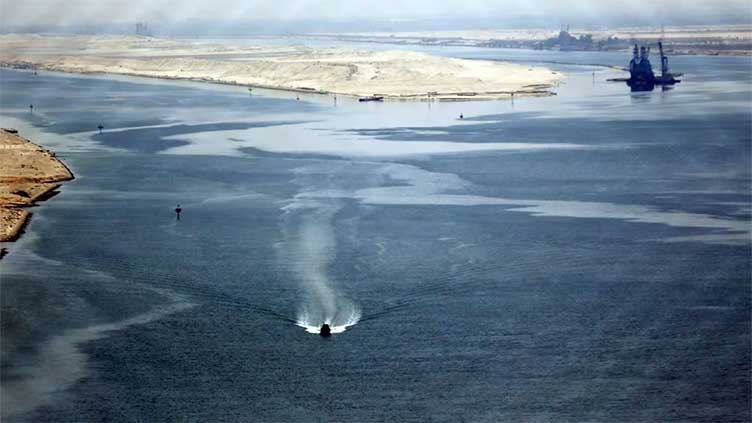Suez disruption: a new inflation risk on the horizon

World
Shipping cost could rise due to attacks by Yemen's Houthis on ships in the Red Sea
FRANKFURT (Reuters) – A lengthy disruption of shipping via the Suez Canal could push up prices and weigh on economic growth, particularly in Europe, which is already struggling with a perilous combination of high inflation and economic contraction.
The following looks at the potential macroeconomic costs associated with the disruption after attacks by Yemen's Houthis on ships in the Red Sea forced firms to halt or reroute traffic.
WHAT'S AT STAKE?
About 15% of world shipping traffic including roughly 30% of global container trade passes through the Suez Canal.
Routing ships around Africa would increase a round-trip journey by about two and a half weeks, cutting shipping capacity and pushing up costs.
"The longer duration of the transit via the Cape of Good Hope reduces an Asia – Europe voyage effective capacity by 25%," UBS estimates.
Given that such a voyage could take over 10 weeks, even a short disruption would have a ripple effect that could last several months.
This year's holiday season is safe, however, as most goods needed for Christmas have arrived.
WHAT HISTORICAL PRECEDENTS SHOW?
When a container vessel blocked the Suez Canal for six days in 2021, economists estimated that daily trade worth up to $10 billion came to a halt.
Insurance claims from that incident could eventually end up north of $2 billion, reinsurer SCOR estimates.
WHAT WILL IT COST NOW?
Costs could come on multiple channels. The most immediate impact would be via energy prices but markets are so far calm. Oil prices did rise somewhat but not much more than 1% compared to a week ago. Gas prices are, however, down, suggesting that there is little concern about the delay of LNG traffic.
Another cost is higher shipping rates and increased insurance fees.
"It's bad news because it reaches us at a moment when we already have some other trends that have a negative impact on shipping costs," Jan Hoffmann, head of the Trade Logistics Branch at the United Nations Conference on Trade and Development (UNCTAD) said.
Hoffmann said container shipping rates were now at their highest all year.
"The latest container shipping rates are still low compared to the supply chain crisis during COVID. But they are higher now than they were at any other moment in 2023."
An even more complex cost relates to shipment delays, which could push up consumer prices as goods may take longer to reach consumers.
"We could see supply chain frictions returning, inflation going up and growth slowing. Fortunately, not at the same magnitude as during the pandemic but still painful enough," ING economist Carsten Brzeski said.
"If the situation would continue for a longer period, we would see inflation going up again."
Germany's economy ministry - mindful of the potential risks to its trade-heavy economy - said on Tuesday it was monitoring events in the Red Sea closely.
Still, economists argue that the disruptions of the past few days are not yet enough to impact either growth of inflation.
"We have seen massive improvements in supply chains since COVID," Guy Miller, chief market strategist, Zurich Insurance Group said. "There's no shortage of products currently and inventories have restocked.
"From a bigger picture perspective I don’t see any material impact in terms of growth or inflation at this point."
WILL CENTRAL BANKS RESPOND?
A combination of global supply snags resulting from the economic disruption caused by COVID-19 and the overheating effect of post-pandemic recovery measures pushed inflation worldwide to highs not seen since the 1970s – prompting central banks to react with unprecedented tightening of key interest rates.
But policymakers only respond to longer term trends, so they are unlikely to react, unless they see a persistent impact that could alter the trajectory of inflation years down the road.
Still, most of the big central banks are now looking to hold interest rates at current highs for some time and any turmoil that could add to global inflation may increase caution about hasty policy easing.


